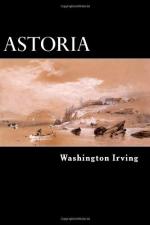The skins of the buffalo, of the Rocky Mountain sheep, of various deer and of the antelope, are included in the fur trade with the Indians and trappers of the north and west.
Fox and seal skins are sent from Greenland to Denmark. The white fur of the arctic fox and polar bear is sometimes found in the packs brought to the traders by the most northern tribes of Indians, but is not particularly valuable. The silver-tipped rabbit is peculiar to England, and is sent thence to Russia and China.
Other furs are employed and valued according to the caprices of fashion, as well in those countries where they are needed for defenses against the severity of the seasons, as among the inhabitants of milder climates, who, severely of Tartar or Sclavonian descent, are said to inherit an attachment to furred clothing. Such are the inhabitants of Poland, of Southern Russia, of China, of Persia, of Turkey, and all the nations of Gothic origin in the middle and western parts of Europe. Under the burning suns of Syria and Egypt, and the mild climes of Bucharia and Independent Tartary, there is also a constant demand, and a great consumption, where there exists no physical necessity. In our own temperate latitudes, besides their use in the arts, they are in request for ornament and warmth during the winter, and large quantities are annually consumed for both purposes in the United States.
From the foregoing statements, it appears that the fur trade must henceforward decline. The advanced state of geographical science shows that no new countries remain to be explored. In North America the animals are slowly decreasing, from the persevering efforts and the indiscriminate slaughter practiced by the hunters, and by the appropriation to the uses of man of those forests and rivers which have afforded them food and protection. They recede with the aborigines, before the tide of civilization; but a diminished supply will remain in the mountains and uncultivated tracts of this and other countries, if the avidity of the hunter can be restrained within proper limitations.
* An animal called the
stoat, a kind of ermine, is said to
be found in North America,
but very inferior to the European
and Asiatic.
* * The finest fur and the darkest color are most esteemed; and whether the difference arises from the age of the animal, or from some peculiarity of location, is not known. They do not vary more from the common marten than the Arabian horse from the shaggy Canadian.
Height of the Rocky Mountains.




